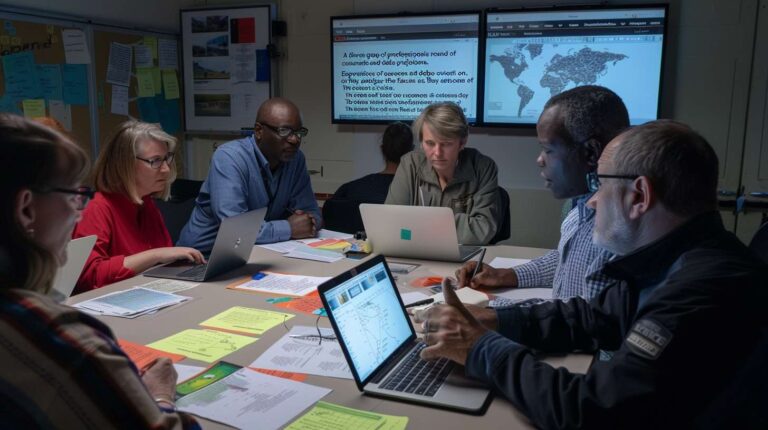A Complete Guide to Designing a Tabletop Exercise – Plan (1/4)
So you want to run a tabletop exercise for your organization? That’s great news! Resilience starts with deliberate small actions that will help you navigate challenges later. Exercises are great ways to simulate a crisis and reveal blind spots and planning gaps.
However, designing an exercise can be daunting. There are a lot of steps
PURPOSE
If you feel led to design an exercise, you likely have a gap to fill or a specific skill to sharpen. The purpose doesn’t need to be sophisticated or lengthy, but you do need a clear ‘destination’ for your participants to work toward.
Don’t get in the car for vacation without a direction to drive.
Here are some helpful questions to get you started.
- Why Are You Running This Exercise?
- Start by thinking about the overall reason behind conducting the exercise. What do you hope to achieve or improve by running this simulation?
- What Do You Want Participants to Learn?
- Consider the key skills, knowledge, or behaviors you want participants to gain from participating in the exercise. What do you want them to take away from the experience?
- How Will This Exercise Help Your Team Prepare for Crises?
- Reflect on how the exercise will benefit your team in preparing for and responding to real-world crises. In what ways will it enhance their readiness and effectiveness?
- What Specific Problems or Challenges Will the Exercise Address?
- Identify the specific issues or areas of concern that the exercise aims to address. What problems do you hope to solve or mitigate through the simulation?
- What Do You Hope to Accomplish by the End of the Exercise?
- Envision the desired outcomes or achievements you hope to reach by the conclusion of the exercise. What success looks like to you at the end of the simulation?
OBJECTIVES
If the PURPOSE is the destination, the OBJECTIVES are the gas stations along the way. You’ll never accomplish the PURPOSE without clear OBJECTIVES.
While there is no limit to the number of OBJECTIVES you can pick, start with two. As you build the exercise, you may realize you need to add more, but don’t overwhelm yourself right now.
These need to be tangible tasks—boxes you can check off, if you will. Make sure you can draw a clear line from each objective to the purpose. If the objective gets you no closer to the desired end state, you need to adjust the objective or change the end state.
PRO TIP
Some of these details can leave you staring at a blinking cursor on an empty page.
This is one of the many tasks Artificial Intelligence can help you accomplish. Use a free tool like ChatGPT, Claude, or Gemini to help articulate your purpose and build objectives that will get you there.
Use a prompt like: “I am designing a tabletop exercise for my organization. I want my team to be better at _____, but I need help defining a purpose and objectives for the exercise.”
Start there and refine the answer with more questions and clarifications.
If you haven’t used AI, this is a great opportunity to play around with it.
SCOPE
Scale
Exercises come in all shapes and sizes, from an informal conversation over lunch to multinational full-scale exercises that deploy operations teams to training sites.
Tabletops are generally conducted around a…table…One person is designated at the facilitator to guide the discussion toward the purpose through the objectives. If you’re designing the exercise, you may assign yourself as the facilitator.
Participants
While more representation at the table can yield greater organizational continuity, there should also be parameters. The complexity of the design and resource requirements increase as more partipants are added.
Try to get key decision-makers at the table, however. It’s important that you establish what roles and responsibilities will look like in a crisis.
Budget
First, you don’t need bundles of cash to design a tabletop discussion! Don’t let lack of resources be an excuse for not preparing!
But let’s get clear about what you will need early on.
Staff hours: Beyond the dollars you will spend, consider the time and impact the exercise will have on the participants’ regular duties. Participants need to be fully present, so don’t assume they will multitask their normal jobs for the duration of the exercise (or work overtime to make up for lost time).
Materials: You will likely need to print the exercise’s facilitator guides, participant manuals, and other documents. Additionally, implementing inject-supporting material like local news stories, maps, PPE, and other aids can boost exercise engagement.
Facilities: This may not be a cost if you’re running an internal exercise, but A/V equipment and a space for the exercise are certainly considerations.
Subject Matter Expert: It may be helpful to bring in a pro to facilitate the exercise or observe and offer feedback. This isn’t necessary for every exercise, but a third party will bring outside insight your team will miss.
Refreshments: Simple but helpful. When participants have snacks and drinks, they are more engaged. I’m sure it’s a science thing, but it’s true.
Conclusion
As you work through them, ensure they are all compiled in a single document somewhere. This will quickly become your exercise plan, so start organizing now.
Some of these details will likely shift as you start the design process. You may think of an additional objective that can be worked on, or you may find that one of the objectives you outlined isn’t really where you want the focus to be.
The Planning phase is all about building a framework. It’s not set in stone yet.





